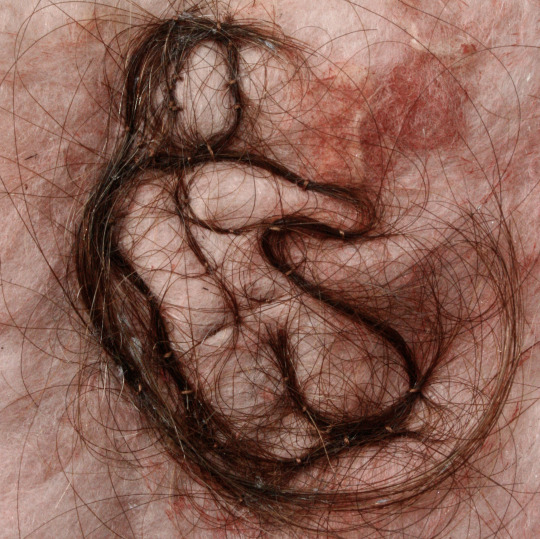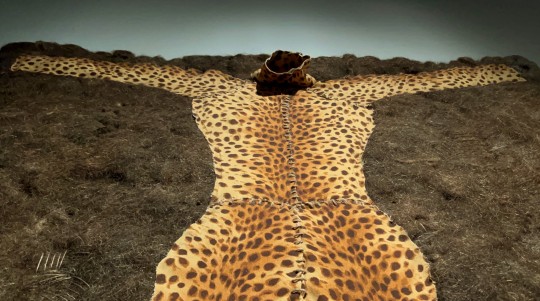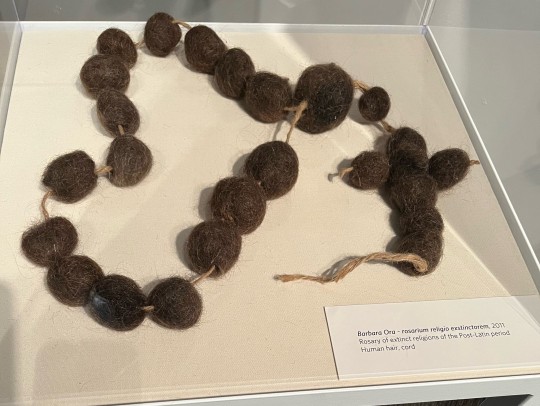#eva_rocha_childhood
Explore tagged Tumblr posts
Photo



Since I was a child I make things with hair. I grew up in a 3 streets/9 blocks town. We had no traditional art materials other than a 5 colored pencil box. I had the impulse to create and I did it with whatever material I had. I made drawings with my hair or objects with it. Even thou I started to use hair just as an available material, as it was also soil, for instance, through life I naturally developed it as a metaphorical material: hair was for me a metaphor for life and death. As life, as nature, hair grows as it grows the branches and leaves of a tree. It has an element of vitality [vita/life]. Hair holds sensuality and eroticism. Hair holds a dichotomy of life and death: if attached to the body it is inviting to the touch and has a quality of sensuality that is undeniable, once cut, it immediately causes aversion to the touch. The inviting sensuality of it is such that, once a religious vow is done in many religions the hair is shaved to show renouncement to the pleasures of the world. It is a renouncement of the body, to eroticism. “Eroticism is the approve of life even in death” [George Bataille]. In the place where I was born, there was 1 cemetery, where one could buy a grave. The ones that could not afford a grave were laid in some designated graves and, after a time, their graves were opened and their remains were thrown in a collective grave. It was a concrete grave, a concrete box covered by a ‘lage’ of two concrete tops. I, and other children, liked going there when the collective grave was opened and the dead were thrown in it. Sometimes we scared each other by making hairballs and throwing them at each other. We knew anyone in that 9 blocks city and recognized them by their hair. In the collective grave, I would always look for Maria. Maria liked beads. When I found her body in the water well, I recognized her by her beads before the men pulled her body from it. I made her a necklace and throw it in the collective grave. Hair stands for me for humans, for individuals, and for the collective.
Later in life I moved to São Paulo. I was in theater, and I created a hair rosary for a play: Olimpo dos Orixás, written by Jayme Compri, where I performed Mainha, a cabocla [indigenous + black + white] spiritual leader from Brasilândia. While doing research on that play and in Brazilian religious syncretism, I thought again of hair as the material that was significant. That necklace rosary was to signify the collective spiritual and also the loss of unity due to the imposed religiosity in terms of power. Due to having worked with Eugênio Barba, founder of the International School of Anthropological Theater during the International Theater Festivals in Brazil, I got interested in how theater and art, in general, were recording, in an anthropological way, culture and time. I had not seen art in a context of a gallery or museum until I was 19 and moved to São Paulo and visited the Museu de Arte de São Paulo. I was fascinated but it. I questioned what all that represented and how that related to my world. I got inhibition to create after seeing that art done with oil paints and bronze. They were expensive materials. In 1998-2002 I lived in United States and visited other museums. I was amazed and shocked by Pre-Columbian Art. That art, so called artifacts, were of a different art material and looked down on a scale of power. It was difficult being an indigenous descendant and seeing that art from that perspective and loss. At that time, I got interested in visual arts. I could not transfer my undergrad studies from Brazil to the US to study arts, so I transferred and adapted it to an Interdisciplinary Studies degree. When talking about Brazilian syncretism and defending papers for class lectures in I used my Rosary made from hair again to talk about Brazilian Afro and Indigenous syncretic Religions and its effects on art. I created other objects from hair at that time, after seeing burial cloths in pre-columbian galleries, especially in 1999 when I visited the Metropolitan Museum. I got interested in using hair as a cloth material, but was discouraged due to the repugnance that it causes.
When living in the Andes of Peru, in Baños del Incas and Cajamarca, in 2005, the materials of my childhood that were natural to me became again my material -- since I did not have a Eurocentric pressure in relation to art. I started to create freely. That direct connection with cultures that had been creating art in pre-Columbus, pre-colonialism, was very liberating! While teaching theater in an international school, I asked some campesinos [indigenous descendants of the Andes] to learn their art. Upon returning to the United States and, again visiting pre-Columbian art galleries in museums, and while seeing those objects old or reproduced, and while not seeing art by indigenous peoples' descendants in modern or contemporary galleries, I saw how our art-history was inexistent. The effects of colonialism were also felt in our possible/impossible participation in the arts. I became a volunteer to give tours of the Virginia Museum of Fine Arts. While a European descendant could find a concise art-history timeline, an indigenous descendant could not. At the same time, I started a non-profit to help the inclusion of Latinos, indigenous descendants mostly, in the arts. I, we, would became invited to participate in the arts during Heritage Month only. Many artists struggled to be included. Many were creating in their own tradition and that too became a difficulty to be accepted. Even thou I was always creating, it was not my intention to enter in a career of being an artist. I liked to create and created with my own my materials -also due to the lack of funds to use more 'noble' materials. They were not meant to be seen. Many times, I made drawings with my hair. My first work shown in a gallery was made from hair [in photo: Eaves" 2011]. It was an invitation to participate at the 6th Biennial International Miniature Invitational Think Small at Art Space in Richmond, VA . My work was featured in an article by Amy Richie, due to the curiosity to that material choice and her eyes as an art-historial to associate it with Ingres. That European connection was still a reference to seeing the art, in that case done by me not intending that connection. In 2011 I created other works with hair. In 2013 I created an installation, "Fodder::Beauty" at Art Space which I did with hair again to comment on women, beauty, and feminicide.
When allowed, rewarded my very first solo exhibition by the Taubman Museum, I search for funds for art, but that is always rewarded to the same groups, or for institutionalized artists being rewarded by institutions. As an artist and indigenous descendant, I understood from all angles the process of a historical exclusion that had created the impossible art-history timeline for our artists. I decided to create my solo exhibition mostly from hair. In “HAVE YOU SEEN the Dark Parrot” I propose a dialogue on the connections of historic and contemporary UNSEEN cultures lost under a disempowered art-history, consumed as othering objects, and the connection to issues such as the UNSEEN women of indigenous descendant consumed or sold as fetishized objects. I used hair as my material for a human element and/or a collective urn.
[photos: “Eaves” 2011, “Altar Cloth” detail 2022, “Barbara Ora, Rosary” [1993, 1999, 2011]
#eva rocha#eva_rocha_hair#hair_drawing#hair_rosary#hair_textile#eva_rocha_decolonizing#decolonizing_art#eva_rocha_feminicide_art#eva_rocha_artefactual_art#artefactual_art#eva_rocha_dark_parrot#eva_rocha_childhood#human_material#femininicide_cloth
1 note
·
View note